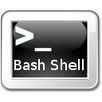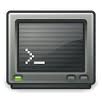
This is an article of mine, originally published on Wazi
Apache is the world’s most popular web server and its normal use is to provide websites on the Web, but sometimes you can use it also to provide other services.
In this tutorial we’ll see how to set up an Apache with DAV and LDAP to create a file server, which according to the user profile on Ldap will give them permission to read, write, or none.
How you can use it?
A file server like this can be used easily from Windows, Mac or Linux; files can be accessed both from the web with any browser or with programs that support the DAV protocol. As an example you could keep your group calendar there and update it with Lighting (a Thunderbird extension for calendaring), and so every member of the group will have his calendar in sync with this method; or you can use it as a basic documentation system where to put your doc, PDF, or any document and share them in your company (or outside if you want).
Continue reading »


 On Linux there is a way to set/change the priority of processes, the user can act to give greater or lesser priority to its own processes.
On Linux there is a way to set/change the priority of processes, the user can act to give greater or lesser priority to its own processes.
 If you think that the operations about users are only: creation, deletion and change of the passwords you are in error, in the standard GNU/Linux system about authentication and authorization of users there are some interesting flags regarding the age of an account.
If you think that the operations about users are only: creation, deletion and change of the passwords you are in error, in the standard GNU/Linux system about authentication and authorization of users there are some interesting flags regarding the age of an account.